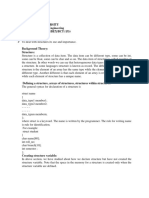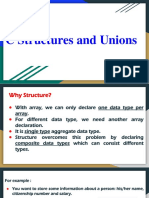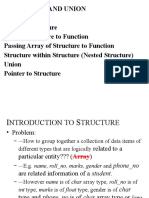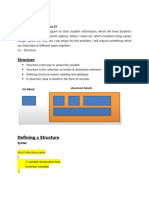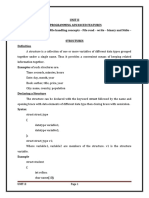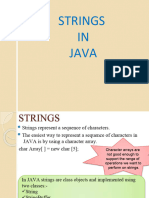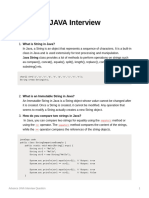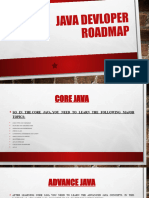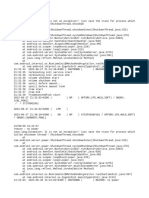0% found this document useful (0 votes)
14 views43 pagesC Structures
The document provides an overview of structures in C programming, detailing their definition, declaration, and usage for organizing different data types into a single entity. It includes examples of structure definitions, initialization, and accessing members, as well as the use of arrays of structures. Additionally, it discusses the use of pointers with structures and the typedef keyword for creating new data types.
Uploaded by
Smt.A.Sathyavathi Assistant ProfessorCopyright
© © All Rights Reserved
We take content rights seriously. If you suspect this is your content, claim it here.
Available Formats
Download as PDF, TXT or read online on Scribd
0% found this document useful (0 votes)
14 views43 pagesC Structures
The document provides an overview of structures in C programming, detailing their definition, declaration, and usage for organizing different data types into a single entity. It includes examples of structure definitions, initialization, and accessing members, as well as the use of arrays of structures. Additionally, it discusses the use of pointers with structures and the typedef keyword for creating new data types.
Uploaded by
Smt.A.Sathyavathi Assistant ProfessorCopyright
© © All Rights Reserved
We take content rights seriously. If you suspect this is your content, claim it here.
Available Formats
Download as PDF, TXT or read online on Scribd
/ 43


















